Eddy Covariance Systems
LI-COR eddy covariance systems measure the exchange of CO2, H2O, CH4 , and energy between the earth's surface and the atmosphere, empowering researchers to advance scientific understanding of climate and ecosystem dynamics.
The most accurate, affordable, and deployable eddy covariance systems available, LI-COR systems are trusted by researchers and flux networks around the world.
Get a QuoteUpcoming Webinar
Proximal Sensing and Gross Ecosystem Productivity: Lessons Learned by Combining Flux Observations and Ground Spectral Sensors
Register NowFrom system design and set-up to data collection and automated flux computation, LI-COR offers comprehensive eddy covariance solutions that streamline the process for researchers of all experience levels.
Simplified, automated systems
LI-COR gas analyzers, instrument platforms, and software simplify the eddy covariance method, making it more accessible to an expanding range of applications and research areas. Our systems are straightforward, flexible, and can be customized from a single-analyzer setup to advanced systems that measure methane flux and biological and meteorological variables.
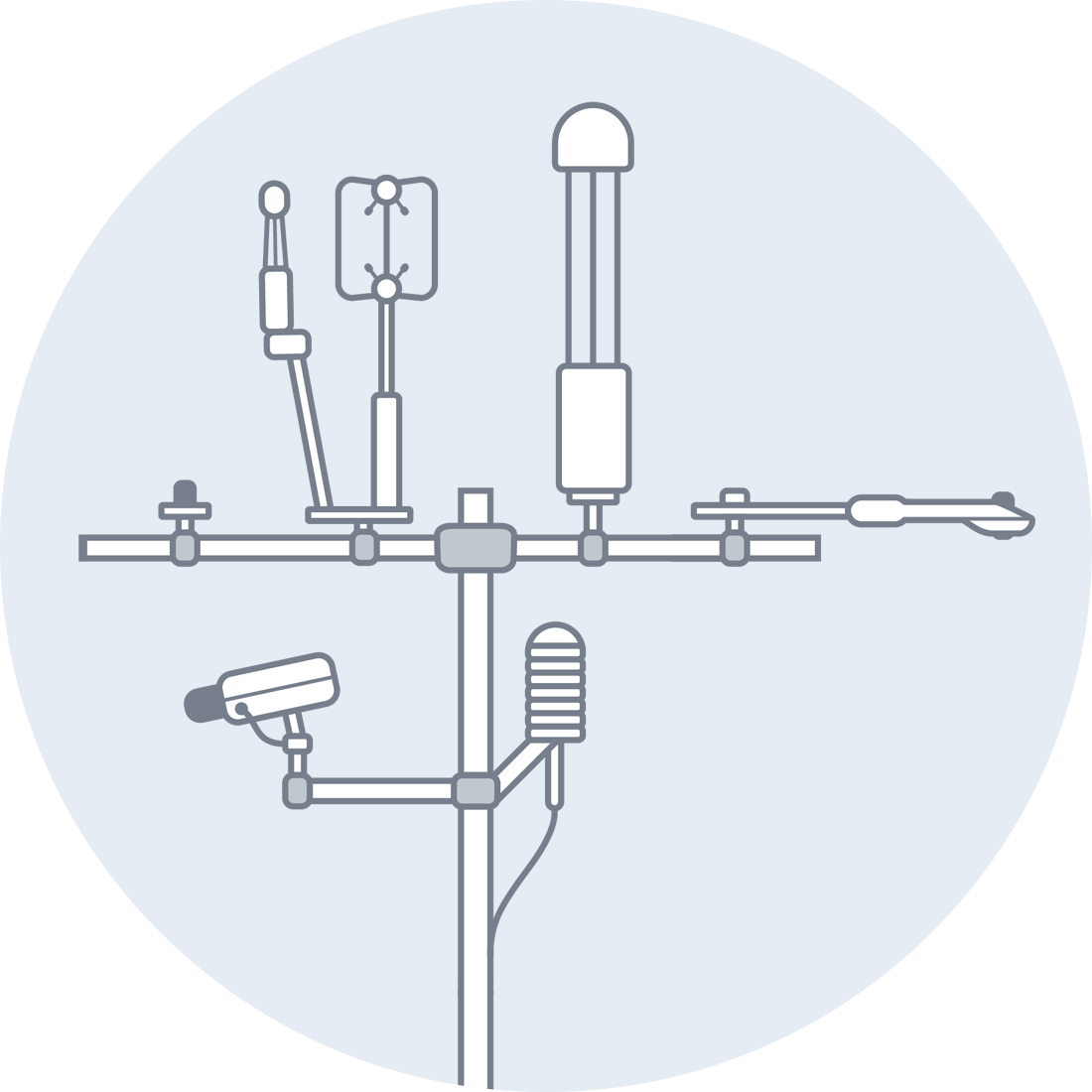
Three-gas system, low power requirements
Featuring the most trustworthy gas analyzers available, LI-COR eddy covariance systems measure CO2, H2O, CH4, and energy flux with as little as 12 watts in ideal conditions. Open path CO2, enclosed path CO2, and any combination with CH4 require less power than any other system on the market. Solar power systems - designed to LI-COR specifications - can power the system wherever it's deployed.
Design your systemGlobal standard for eddy covariance research
LI-COR systems are the global standard chosen by major flux networks—including AmeriFlux, AsiaFlux, ChinaFLUX, Chinese Ecosystem Research Network (CERN), Cold and Arid Regions Network (CARN), Integrated Carbon Observatory System (ICOS), and National Ecological Observatory Network (NEON).

Reliable data collection
Every aspect of a LI-COR eddy covariance system is designed with reliable data collection in mind.
Omnidirectional instrument positioning
The analyzer and sonic anemometer configuration of LI-COR instrument platforms allows for reliable measurements from nearly any wind direction.
Temperature-regulated optical components
LI-COR analyzer optics are temperature regulated, mitigating signal drift with changing ambient temperatures.
Ability to Integrate multiple sonic anemometer models
To meet diverse research needs, LI-COR systems can be configured with more than 10 digital anemometer models from different manufacturers.
Streamlined data analysis
Data from LI-COR instruments are optimized for processing using EddyPro® Software and the SmartFlux® System.
Minimized flow distortion
Fluxes are computed by partitioning the total air flow measured by the anemometer into three wind components. If air flow is disrupted near the anemometer, flow distortion errors can occur. Since there is no correction algorithm for this, it is critical to choose a gas analyzer and anemometer system that minimizes or eliminates this issue.
Sensor separation with LI-COR instrument models mitigates the distortion of air flow through the sonic anemometer that is found in co-located configurations.

LI-COR advantages
LI-COR eddy covariance systems are designed for reliable data collection.
| Key Feature | The LI-COR Advantage |
|---|---|
| Omnidirectional instrument positioning | The analyzer and sonic anemometer configuration of LI-COR instrument platforms allows for reliable data collection from nearly any wind direction. |
| Instruments separated to reduce flow distortion | Sensor separation in LI-COR instruments mitigates the distortion of air flow through the sonic anemometer that is found in co-located instruments. |
| Ability to integrate multiple sonic anemometer models | LI-COR systems can be configured with more than 10 digital anemometer models from different manufacturers. |
| Streamlined data analysis | Data from LI-COR instruments are optimized for processing with EddyPro Software and the SmartFlux System. |
Field-proven gas analyzers
Featuring the most trustworthy gas analyzers available, LI-COR systems include technology that has been chosen as the global standard by major flux networks. Testing by these networks has proven that our gas analyzers are the most stable and precise, offering superior gas measurements (mol fraction and density) in eddy covariance systems.
Fast, accurate measurements
With a complete LI-COR eddy covariance system, observations accurately reflect differences in ecosystem-level gas exchange. Your results can be reliably interpreted, and you can submit data that are free of introduced bias from non-standard instruments or processing methods.
With careful optical and electronic design, the performance of LI-COR analyzers is consistent with theoretical expectations. Full calibration details are provided with every instrument.
Deploy anywhere
LI-COR gas analyzers provide dependable, stable gas concentration measurements over a full temperature range.
The open path LI-7500DS and LI-7700 and enclosed path LI-7200RS analyzers are designed for challenging outdoor environments. Key optical components are actively temperature regulated, and electronics are stable over a wide temperature range.
High-speed LI-COR gas analyzers have the lowest power requirements of any comparable analyzer. They accommodate a variety of sonic anemometers and mounting structures for proven performance and reliable data.
See all instruments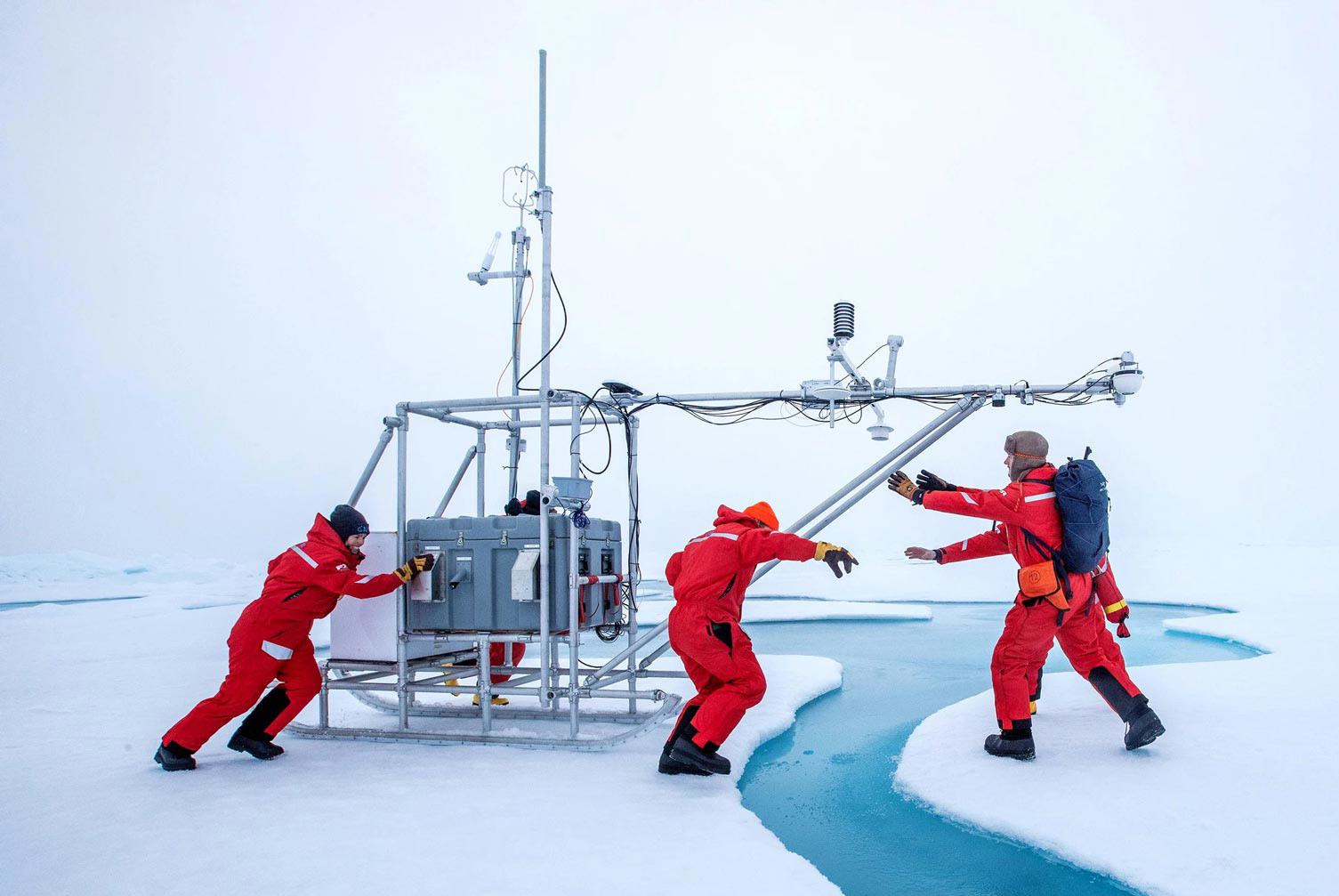
Photo Credit: Alfred-Wegener Institut/Lianna Nixon, University of Colorado Boulder (CC-BY 4.0)
LI-COR advantages
LI-COR gas analyzers are designed for reliable data collection in challenging environments.
| Key Feature | The LI-COR Advantage |
|---|---|
| Temperature-regulated optical components | LI-COR analyzer optics are temperature regulated, mitigating signal drift from changing ambient temperatures. |
| Low power requirements | The LI-7500DS draws only 4 W of power—the lowest of comparable analyzers—and is ideal for remote deployment. |
Zoom in on the ecosystem
To explore what drives eddy covariance flux results, zoom in to light, plants, and soil. Eddy covariance research can be further informed by integrating data from smaller scale measurements such as leaf area index, leaf level processes, soil gas flux, trace gases, and light architecture. Learn more about LI-COR ecosystem monitoring solutions.
Learn moreReliable data processing on-site
LI-COR eddy covariance systems are the only systems that provide accurate, fully processed, and corrected results on-site as data are collected. With automated flux computation, processing, and optimization, you get dependable data in real time with EddyPro® Software on your computer and the SmartFlux® System, and online with FluxSuite® Software.
EddyPro® Software
With over 2000 peer-reviewed publications and continuous improvements driven by community partnerships, EddyPro Software has redefined the standard for flux data processing.
EddyPro Software performs standardized processing steps and adheres to formatting requirements from FLUXNET, ICOS, CERN, AmeriFlux, OzFlux, and other networks. It has been tested, verified, and used by major networks—you can use it with confidence that the results are the best available.
Get EddyPro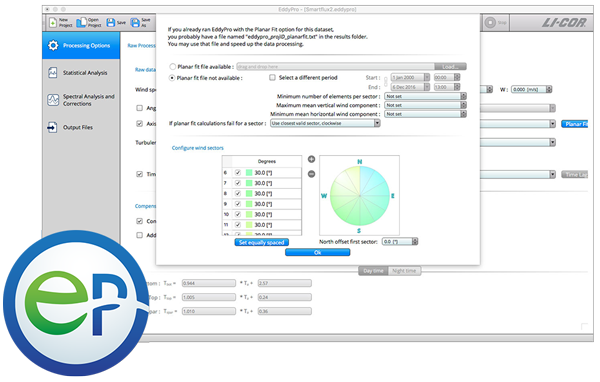
EddyPro advantages
- A graphical interface and easy configuration that requires no custom programming with proprietary languages
- Complete set of processing options, including frequency response correction, random error estimation, and quality flagging
- Standardized computation routines used by leading flux networks
- The same results whether on a computer or the SmartFlux® System, allowing for replication across devices and sites
- Outputs that meet the latest FLUXNET, ICOS, and AmeriFlux database standards without requiring additional post-processing
- Seamless processing of LI-COR .ghg files, with support for other file types
- Customizable flux processing routines
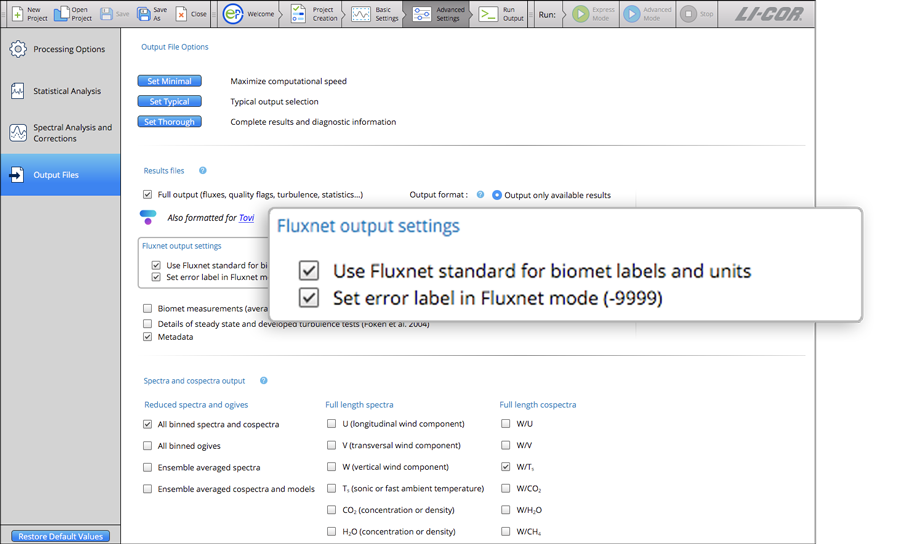
On-site with the SmartFlux® System
The SmartFlux System is the on-site processing and GPS synchronization component of LI-COR eddy covariance systems. It features a powerful microcomputer that runs EddyPro Software and applies over 50 flux processing algorithms in real time, providing fully processed flux results. The GPS receiver acts to synchronize the system clock and mitigate drift or misalignments. Flexible data transfer options can accommodate existing setups.
SmartFlux corrects and processes fluxes using the peer-reviewed calculations and algorithms from EddyPro, including corrections and spectral analysis. It integrates and synchronizes biomet and high-speed digital wind and gas analyzer data, ensuring fluxes are not biased by random and systematic timing errors.
Learn more about SmartFlux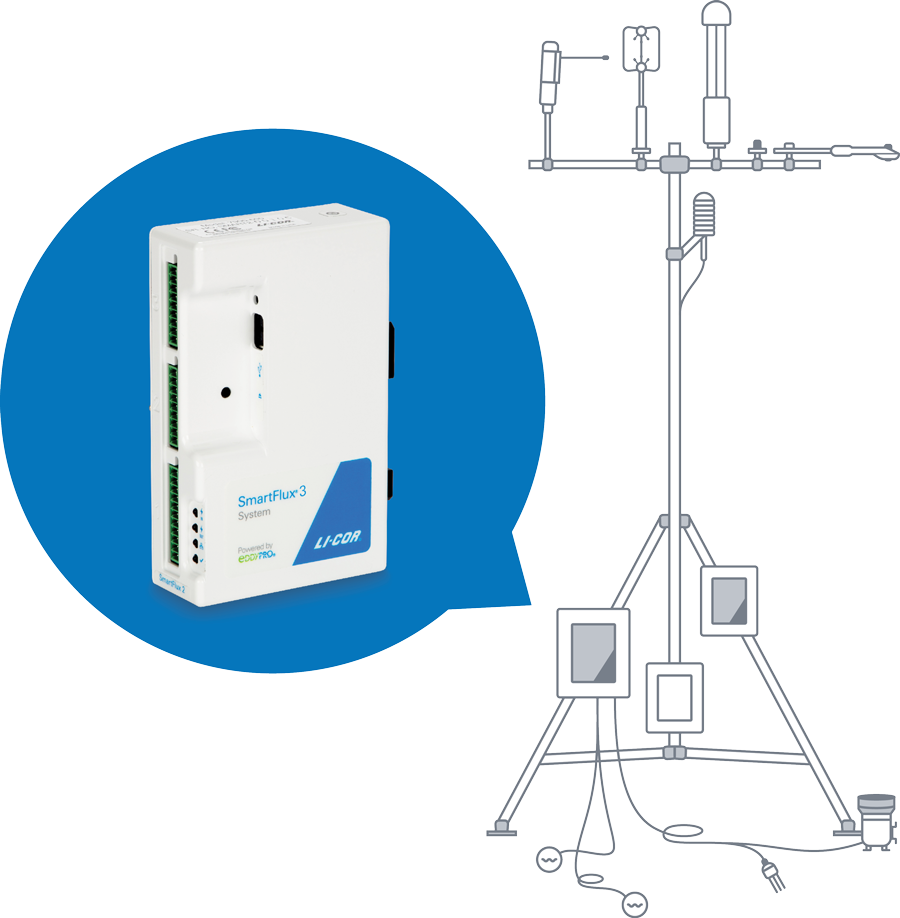
Online with FluxSuite® Software
FluxSuite Software is a secure web-based cloud platform that allows you to view and download fully processed results to your smartphone, tablet, or computer. Track multiple sites, add users and collaborators, and set-up email alerts for data quality and equipment status.
If you have a web-enabled site that currently runs the SmartFlux System, you can try FluxSuite now.
Try FluxSuite free for 60 days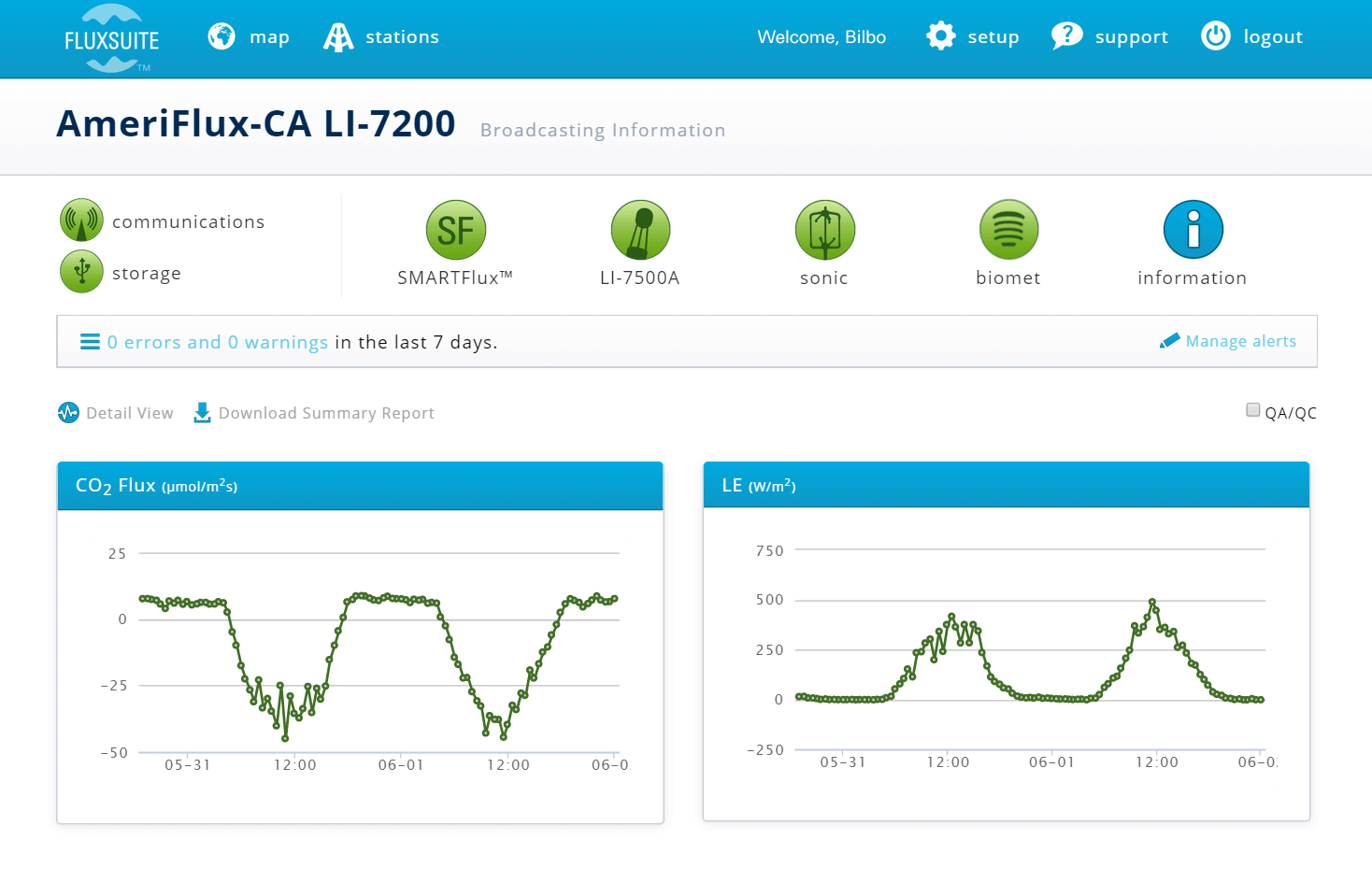
LI-COR advantages
LI-COR eddy covariance systems perform reliable data processing.
| Key Feature | The LI-COR Advantage |
|---|---|
| Field-based microprocessor | The ARM Cortex 720 MHz processor in SmartFlux applies over 50 flux processing algorithms in real time. |
| Incorporation of widely published and accepted corrections and calculations | SmartFlux corrects and processes fluxes using the peer-reviewed calculations and algorithms from EddyPro, including corrections and spectral analysis. |
| Reproducibility between desktop and embedded software | EddyPro produces the same results on a PC and the SmartFlux System for consistent replication across devices and sites. Comparative logger-based systems use different code for embedded and desktop software, making reproducibility difficult. |
| Site-specific and user-specified processing | With LI-COR systems, flux processing routines can be customized for individual sites. Comparative logger-based systems only compute minimal, approximated flux data and exclude numerous critical steps. |
| Microsecond time synchronization | SmartFlux integrates and synchronizes biomet and high-speed digital wind and gas analyzer data, ensuring fluxes are not biased by random and systematic timing errors. |
| Point-and-click user experience | EddyPro features a thoughtfully designed and implemented graphical user interface. Comparative logger-based systems require custom programming with proprietary language. |
| Data outputs designed to meet flux network standards | EddyPro outputs are designed to meet the latest FLUXNET, ICOS, and AmeriFlux database standards without requiring additional post-processing. |
Support, training, and resources
LI-COR offers world-class training, education, documentation, and ongoing support for its eddy covariance systems.
Supported by scientists
An industry-leading team of eddy covariance scientists are available to answer questions and support your LI-COR system. LI-COR scientists also conduct research, publish, and collaborate with the community.
Training
In-person training courses are offered in Lincoln, Nebraska, and at various other locations throughout the year. Taught by eddy covariance specialists, the course includes an overview of eddy covariance theory and applications, site design, instrument configuration, data processing with EddyPro Software, and hands-on experience with instruments and site set-up.
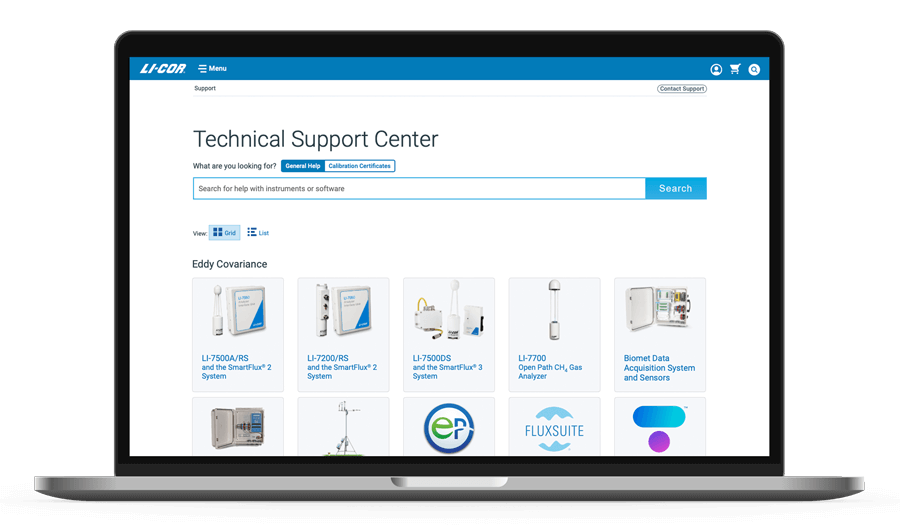
Technical support center
The LI-COR technical support center is an extensive repository of technical documents, application notes, installation guides, calibration certificates, software, and videos related to eddy covariance system components and accessories. It is the point of contact for LI-COR support.
Visit the support centerThe eddy covariance book
Written by LI-COR Science and Strategy Fellow and internationally recognized eddy covariance expert George Burba, the 2022 edition of Eddy Covariance Method for Scientific, Regulatory and Commercial Applications is for anyone—from novice to expert—interested in the method.
At nearly 700 pages, this comprehensive text includes hundreds of illustrations, examples, and references on the theory, applications, and practical aspects of the method.
Download the bookEddy Covariance Products
Continue Reading
References
- Wyngaard, J. C., 1981. The effects of probe-induced flow distortion on atmospheric turbulence measurements. Journal of Applied Meteorology, 20: 784-794.
- Wyngaard, J. C., 1988. Flow-distortion effects on scalar flux measurements in the surface layer: Implications for sensor design. In Hicks, B. B. (Eds) Topics in Micrometeorology. A Festschrift for Arch Dyer. Springer, Dordrecht.
- Frank, J. M., W. J. Massman, and B. E. Ewers, 2013. Underestimates of sensible heat flux due to vertical velocity measurement errors in non-orthogonal sonic anemometers. Agricultural and Forest Meteorology, 171-172: 72-81.
- Horst, T. W., S. R. Semmer, and G. Maclean, 2015. Correction of a non-orthogonal, three-component sonic anemometer for flow distortion by transducer shadowing. Boundary-Layer Meteorology, 155 (3): 371-395.
- Frank, J. M., W. J. Massman, E. Swiatek, H. A. Zimmerman, and B. E. Ewers, 2016. All sonic anemometers need to correct for transducer and structural shadowing in their velocity measurements. Journal of Atmospheric and Oceanic Technology, 33(1): 149-167.
- Huq, S., F. De Roo, T. Foken, M. Mauder, 2017. Evaluation of probe-induced flow distortion of Campbell CSAT3 sonic anemometers by numerical simulation. Boundary-Layer Meteorology, 165(1): 9-28.
- Horst, T. W., R. Vogt, and S. P. Oncley, 2016. Measurements of flow distortion within the IRGASON integrated sonic anemometer and CO2/H2O gas analyzer. Boundary-Layer Meteorology, 160(1): 1-15.
- Dyer, A. J., 1981. Flow distortion by supporting structures. Boundary-Layer Meteorology, 20(2): 243-251.
- Grare, L., L. Lenain, and W. K. Melville, 2016. The influence of wind direction on Campbell Scientific CSAT3 and Gill R3-50 sonic anemometer measurements. Journal of Atmospheric and Oceanic Technology, 33(11): 2477-2497.